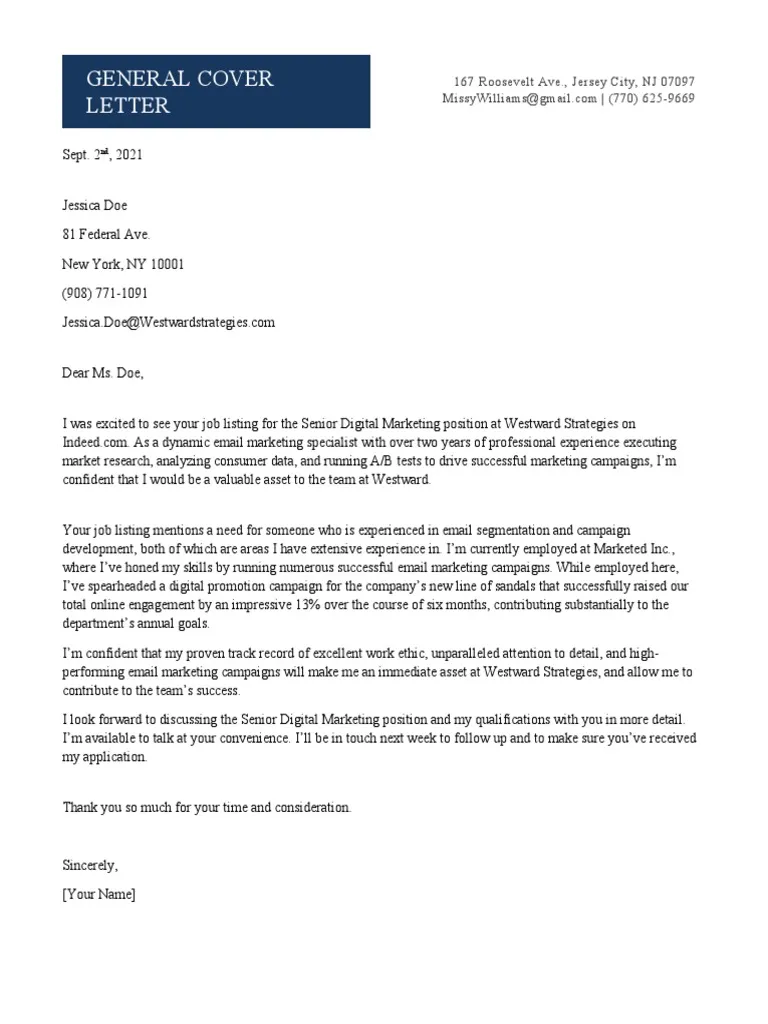What is a Job Cover Letter
A job cover letter is a critical document that accompanies your resume when you apply for a job. It serves as your initial introduction to a potential employer, allowing you to briefly highlight your skills, experience, and qualifications. Unlike a resume, which provides a factual summary of your employment history, a cover letter provides you with the opportunity to showcase your personality, demonstrate your understanding of the job requirements, and explain why you are an excellent fit for the role. It is an opportunity to make a strong first impression and persuade the hiring manager to thoroughly review your resume.
Why Is a Cover Letter Important
In today’s competitive job market, a well-crafted cover letter can significantly increase your chances of securing an interview. It’s not just a formality; it’s a strategic tool that sets you apart from other candidates. A cover letter allows you to personalize your application and show your genuine interest in the opportunity. It offers you a platform to connect your skills and experiences directly to the job requirements, showing your suitability for the role. A good cover letter also demonstrates your writing skills, attention to detail, and professionalism, all of which are valuable qualities employers seek. Many hiring managers see cover letters as essential because they offer unique insights into a candidate’s communication skills and personality.
Essential Elements of a Cover Letter
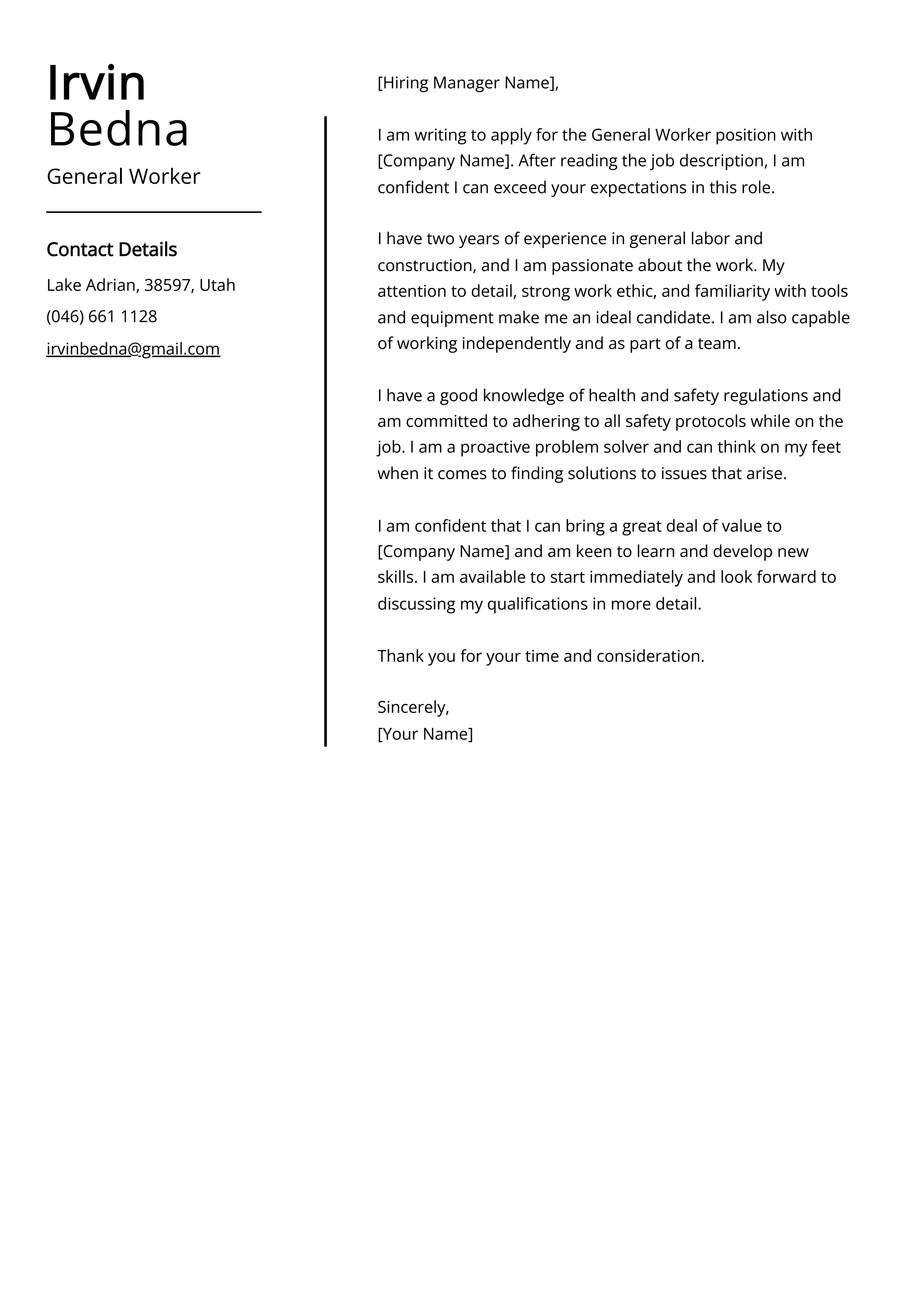
A strong cover letter consists of several core elements designed to create a compelling case for your candidacy. Structure your cover letter in a clear and readable manner, enabling the hiring manager to grasp the most important details quickly. Start with your contact information, followed by a personalized greeting that ideally addresses the hiring manager by name. The body paragraphs of your cover letter should focus on highlighting your relevant skills and experience, showing your grasp of the job requirements, and expressing your enthusiasm for the opportunity. End with a clear call to action, inviting the reader to review your resume and consider you for an interview.
Contact Information Section
At the top of your cover letter, include your contact details such as your full name, phone number, email address, and optionally your LinkedIn profile URL. Ensure this information is accurate and up-to-date, as this is how the hiring manager will contact you. Use a professional email address. Presentation is key; align the information to the left or right or center it, but remain consistent. This section should be clear, concise, and easily accessible.
Personalized Greeting
Avoid using generic greetings like ‘To Whom It May Concern.’ Instead, try to find the hiring manager’s name or the person in charge of recruitment. Research the company’s website or LinkedIn to find the appropriate contact person. If you can’t find a specific name, a greeting such as ‘Dear Hiring Manager’ or ‘Dear [Department] Team’ is acceptable, but always strive to personalize your greeting. This displays that you have taken the time to research the company and are genuinely interested in the opportunity.
Body Paragraphs
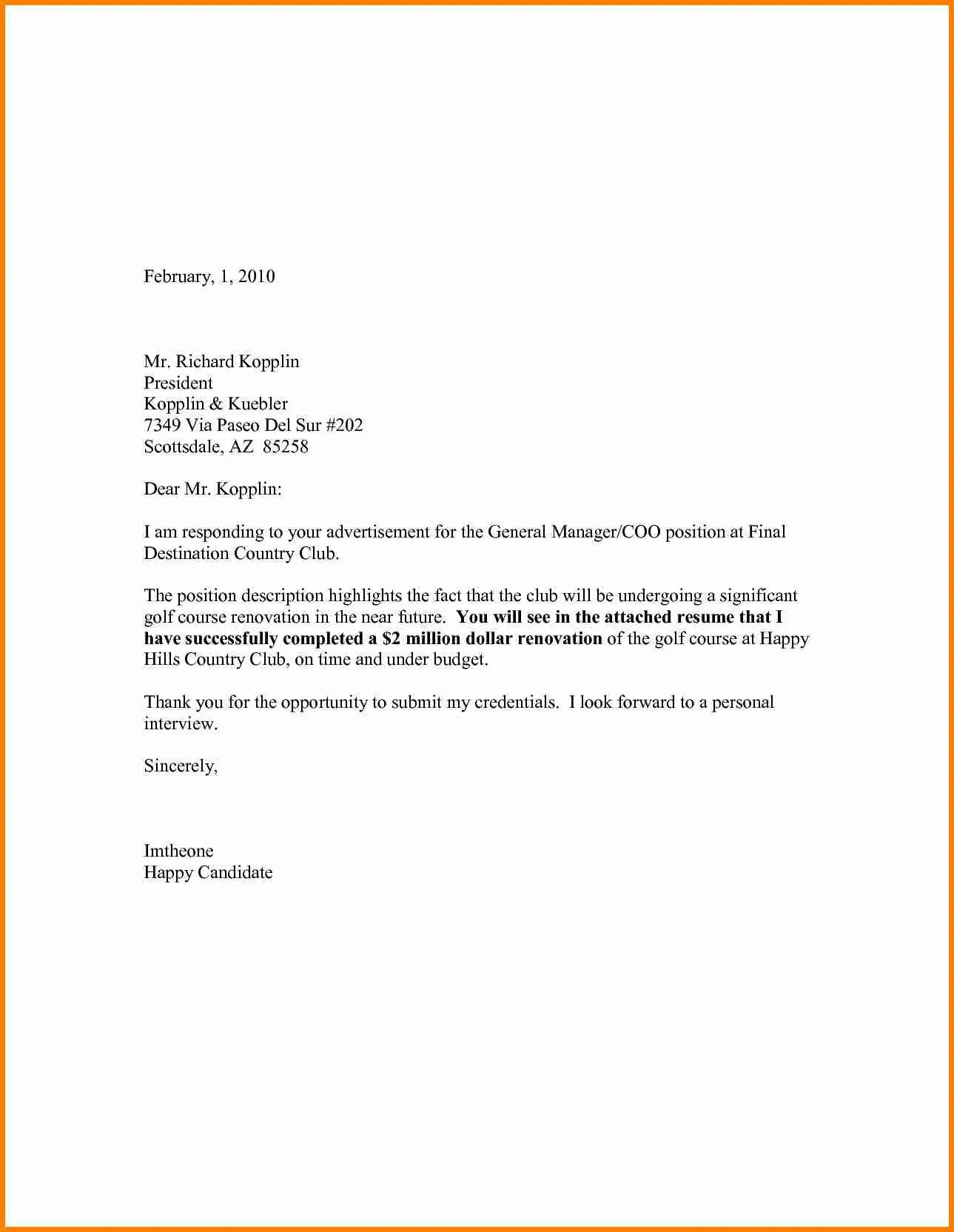
The body of your cover letter is where you make a strong case for your suitability. It should contain several paragraphs that showcase your relevant skills and experience, highlight your achievements, demonstrate your interest in the company, and explain how you align with the job requirements. The best cover letters don’t just list your accomplishments; they tell a story. Focus on specific examples that demonstrate your value and how you have made a positive impact in your previous roles. Use strong action verbs and quantify your achievements whenever possible to make your claims more impactful.
Highlighting Relevant Skills and Experience
Carefully study the job description and identify the key skills and qualifications the employer is looking for. Highlight experiences and skills that directly match these requirements in your cover letter. Provide specific examples of how you have used these skills to achieve results in the past. Tailor your letter to each specific job, avoiding a generic, one-size-fits-all approach. This demonstrates to the employer that you’ve invested time in understanding their needs and have the expertise needed to excel in the role. Consider using the STAR method to illustrate how you handled specific situations and achieved positive outcomes.
Showcasing Achievements and Accomplishments
Instead of merely listing your job duties, concentrate on showcasing your achievements and accomplishments. Quantify your results whenever you can to demonstrate your impact. Use the STAR method (Situation, Task, Action, Result) to provide context and explain how you tackled challenges and achieved positive outcomes in your previous roles. For example, instead of saying ‘Managed social media,’ you might write, ‘Increased social media engagement by 30% within six months by implementing a new content strategy.’ This helps the hiring manager visualize your capabilities and appreciate your value proposition.
Demonstrating Company Research and Interest
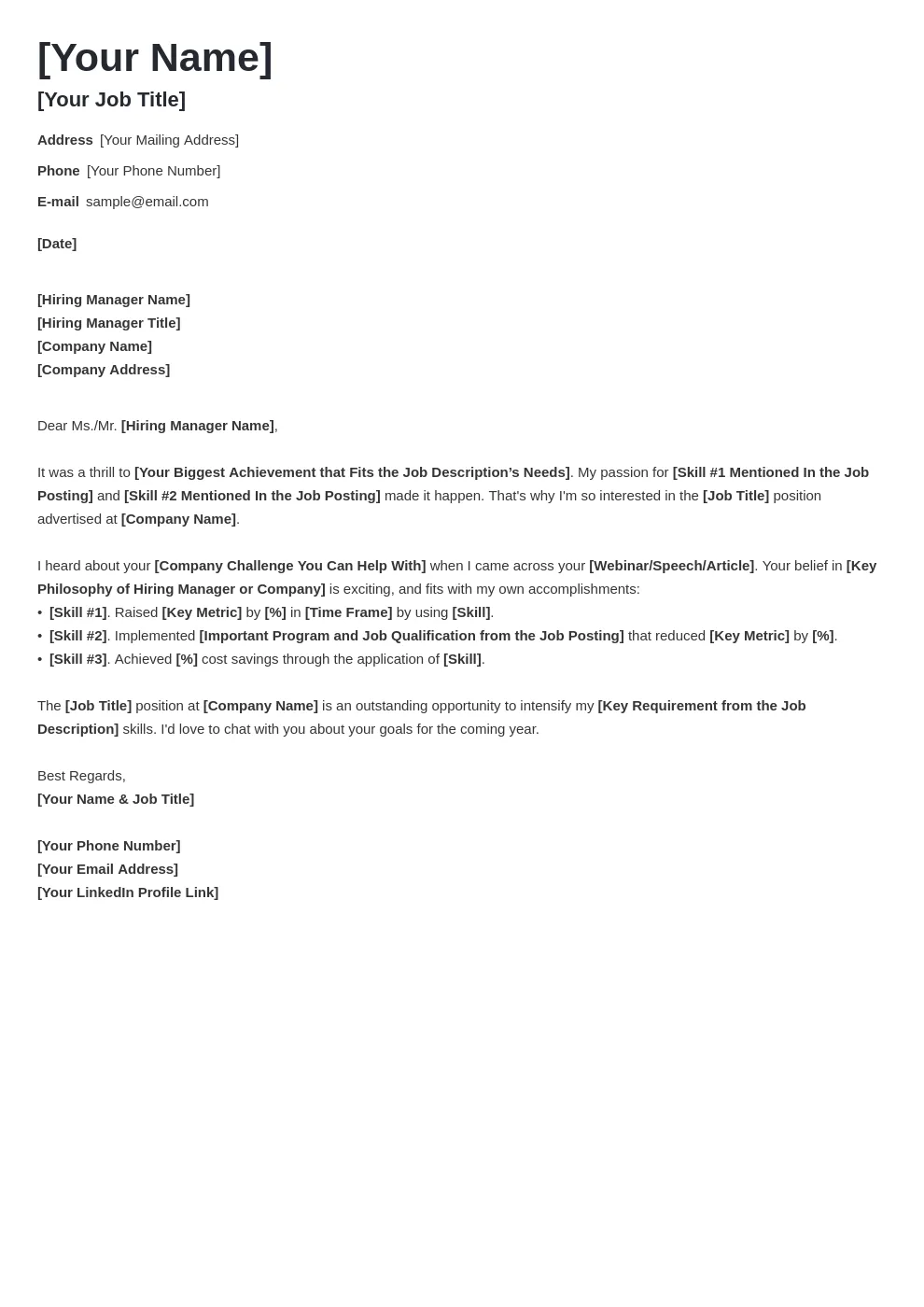
Show the employer you’ve done your research by mentioning specific details about the company and the role. Research the company’s mission, values, and recent projects to understand its culture and goals. Explain why you’re excited about the opportunity and how your values align with the company’s. Demonstrate that you understand the company’s needs and have a clear vision of how you can contribute to its success. Mentioning specific projects or initiatives showcases your genuine interest and proactive approach. A strong cover letter is a clear indication of your interest.
Call to Action and Closing
Conclude your cover letter with a clear call to action. Express your enthusiasm for the opportunity and reiterate your interest in the position. Invite the hiring manager to review your resume and suggest a meeting to discuss your qualifications further. Express your gratitude to the hiring manager for their time and consideration. Always include a professional closing, such as ‘Sincerely’ or ‘Best regards,’ followed by your full name. Always proofread your entire letter carefully to ensure there are no errors or typos.
Formatting and Design Tips for Your Cover Letter
The formatting and design of your cover letter are as important as its content. A well-formatted letter is easier to read and creates a positive first impression. Keep your cover letter concise, ideally no longer than one page. Use a clear and professional font, such as Arial, Calibri, or Times New Roman, and maintain consistent formatting throughout the document. Effectively use white space to break up text and make the letter visually appealing. Proofread and edit your cover letter to eliminate grammatical errors or typos.
Choosing the Right Font and Style
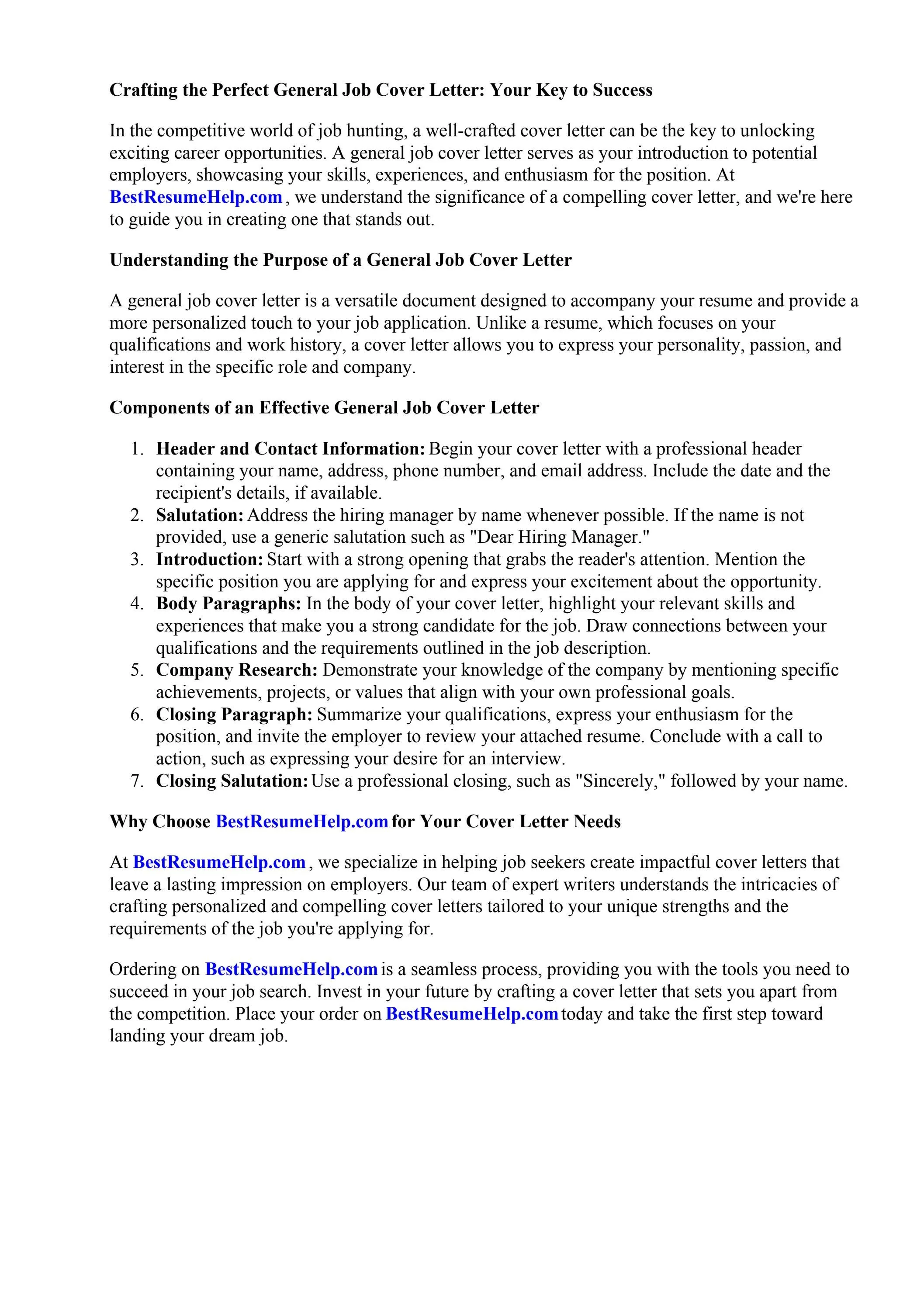
Choose a font that is easy to read and looks professional. Avoid overly stylized or decorative fonts that may distract the reader. Select a font size between 10 and 12 points. Consistency in font size and style across the document creates a cohesive and polished look. Ensure the text is dark enough to read easily on a screen or when printed. Stick to a standard font family like Times New Roman, Arial, or Calibri. These fonts are universally recognized and are considered professional, thus avoiding any potential distractions for the hiring manager.
Keeping Your Cover Letter Concise and Engaging
Keep your cover letter concise and to the point. Hiring managers are often busy and review many applications. Avoid lengthy paragraphs and unnecessary details. Aim for a cover letter that is no longer than one page. Every sentence should contribute to your overall message. Focus on conveying your key qualifications, skills, and your enthusiasm for the opportunity. Make every word count by using strong action verbs and avoiding vague language. Use clear and straightforward language to make your message easy to understand.
Proofreading and Editing Your Cover Letter
Proofreading and editing are crucial steps in the cover letter writing process. Errors in grammar, spelling, and punctuation can reflect poorly on your attention to detail and professionalism. Always proofread your cover letter carefully after you finish writing it. Use a grammar checker tool or ask a friend or family member to review your letter for any mistakes. Ensure your cover letter is free of any typos. Pay attention to sentence structure and clarity to ensure your message is easy to understand. A polished cover letter can make a substantial difference in your application.
Common Mistakes to Avoid in a Cover Letter
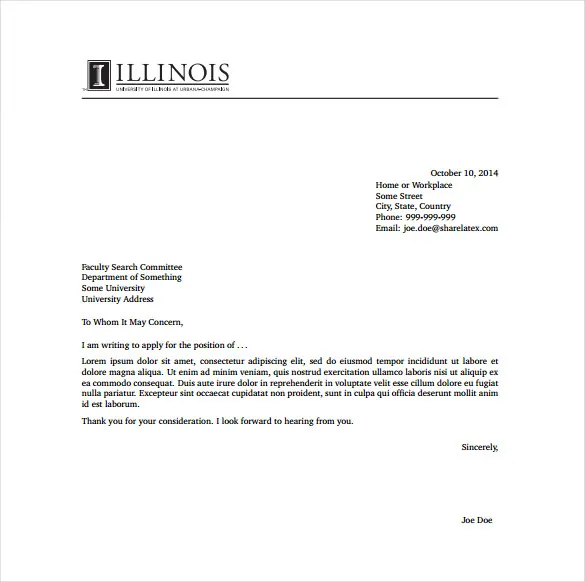
Several common mistakes can undermine your cover letter and reduce your chances of getting an interview. Avoid these pitfalls to make your application as effective as possible. Ensure that you tailor your cover letter to each job and avoid using a generic template. Focus on the requirements of the specific position, emphasizing the skills and experiences that make you the perfect fit. Proofread your cover letter carefully for any errors or typos. A polished and error-free cover letter demonstrates your attention to detail and professionalism.
Ignoring the Job Description
Failing to thoroughly review and address the requirements outlined in the job description is a major mistake. The job description acts as a roadmap to the employer’s needs and expectations. When writing your cover letter, use the job description to show how your skills and experience align with the employer’s specific needs. Tailor your cover letter using keywords and phrases from the job description to prove you understand the role and possess the qualifications the employer seeks. Ignoring the job description signals that you lack attention to detail and may not be a good fit for the position.
Using Generic and Vague Language
Avoid using generic and vague language that fails to provide concrete examples of your skills and accomplishments. Generic statements lack impact and do not effectively demonstrate your capabilities. Instead, use specific examples, quantify your achievements whenever possible, and use action verbs to make your experience compelling. Rather than saying, ‘Responsible for managing projects,’ state, ‘Successfully managed 10+ projects, resulting in a 15% increase in on-time project delivery.’ Tailor your language to the industry and role to show that you possess a deep understanding of the responsibilities.
Focusing Too Much on Yourself
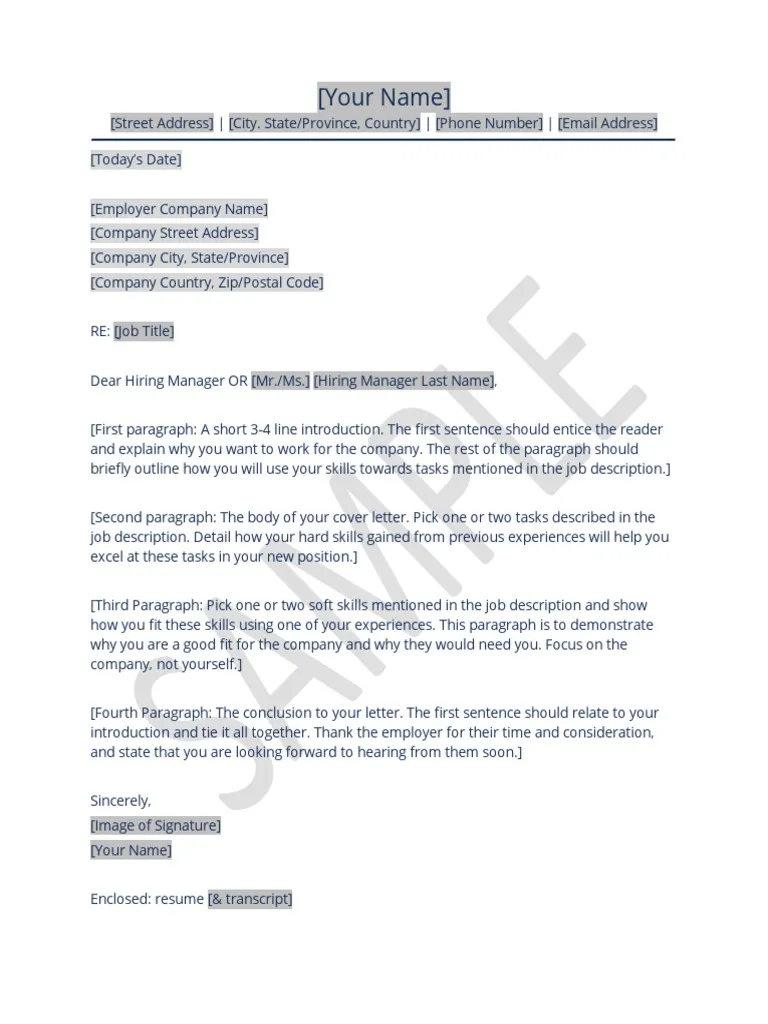
While your cover letter should highlight your skills and experience, avoid focusing solely on yourself without addressing the employer’s needs. A cover letter is not just about you; it’s about how you can assist the company. Ensure you emphasize how your skills and experience can benefit the company. Show that you understand the challenges the company faces and how you can contribute to its success. Make it clear why you are enthusiastic about the opportunity and show your interest in both the role and the company.
Sending the Wrong Cover Letter
A critical mistake is sending the wrong cover letter to a potential employer. This often happens when you reuse a cover letter without modifying it for a specific job. Always customize your cover letter for each job application, and never send a generic letter. Tailor your cover letter by researching the company, the specific role, and the hiring manager. Show you’ve taken the time to understand the company’s needs and tailor your skills and experiences to the role’s requirements. A personalized cover letter will substantially increase your chances of securing an interview.
Tailoring Your Cover Letter to Specific Jobs
One of the most important aspects of writing an effective cover letter is tailoring it to each specific job you apply for. Generic cover letters often fail to impress hiring managers and may be discarded. Tailoring your cover letter demonstrates that you are serious about the opportunity and that you have taken the time to understand the job requirements and the company’s needs. The process involves researching the company, analyzing the job description, and highlighting your relevant skills and experiences.
Researching the Company and the Role
Before you start writing your cover letter, take the time to research the company and the specific role. Visit the company’s website and social media pages to learn about its mission, values, products, and services. Understand the company culture and values to ensure they align with your own. Examine the job description carefully to identify the key skills, qualifications, and responsibilities. Use this information to tailor your cover letter and highlight the aspects of your experience that align with the company’s needs. Researching the company and role is essential to demonstrating your genuine interest and making a strong impression.
Matching Your Skills and Experience to the Job Requirements
The most effective cover letters emphasize how your skills and experience align with the job requirements. Analyze the job description to identify the essential skills and qualifications the employer is seeking. Provide specific examples of how you have used these skills to achieve success in previous roles. Use the STAR method (Situation, Task, Action, Result) to provide context and illustrate your accomplishments. By matching your skills and experience to the job requirements, you show the employer that you have the qualifications and expertise to excel in the role.
Using Keywords from the Job Description
Incorporate relevant keywords and phrases from the job description into your cover letter. Employers often use applicant tracking systems (ATS) to scan resumes and cover letters for specific keywords. Including these keywords helps ensure your application gets noticed. Don’t simply stuff your cover letter with keywords. Integrate them naturally into your sentences, and ensure you accurately represent your skills and experience. This tactic helps you demonstrate that you understand the role and possess the qualifications the employer seeks, while optimizing your application for ATS systems.
Examples of Effective Cover Letter Phrases
Using strong and compelling phrases can significantly enhance your cover letter and make it more impactful. Here are some examples of phrases to incorporate into your cover letter, which help showcase your enthusiasm and qualifications. Always remember to tailor the phrases to your own experience and the specific requirements of the job you are applying for.
Highlighting Your Passion and Enthusiasm
Expressing your passion and enthusiasm for the job and company is crucial. Use phrases that convey your excitement and interest. Show you are genuinely interested in the opportunity and motivated to contribute. By highlighting your passion, you make a positive impression on the hiring manager and make your cover letter memorable. Phrases such as ‘I am particularly excited about the opportunity to…’, ‘I am passionate about…’, and ‘I am eager to contribute to…’ are very effective.
Expressing Your Value Proposition
Clearly articulate your value proposition and explain how you can contribute to the company’s success. Use phrases that highlight your skills, experience, and accomplishments. Use examples to demonstrate your value and show the hiring manager what you bring to the table. Explain how your skills and experience will benefit the company. Phrases like ‘I am confident that my skills in… will enable me to…’, ‘I am well-equipped to…’, and ‘I am certain I can contribute…’ are helpful here.
Requesting an Interview and Following Up
End your cover letter with a clear call to action. Invite the hiring manager to review your resume and consider you for an interview. Always thank the hiring manager for their time and consideration. Following up on your application is a crucial step. After submitting your cover letter and resume, send a follow-up email to the hiring manager to reiterate your interest in the role and ask about the status of your application. You can also include your LinkedIn profile link in the email. These actions can significantly increase your chances of landing an interview.
